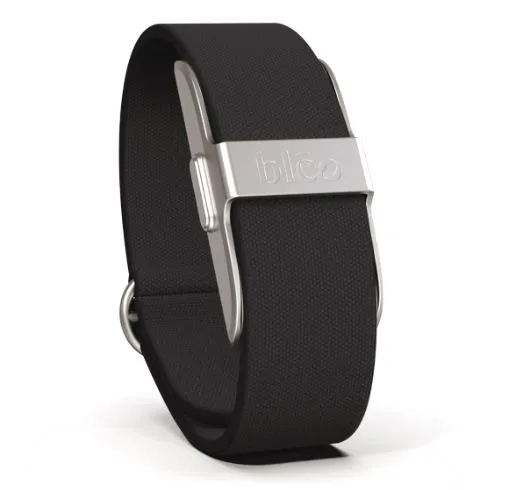Fitness Bracelet for Men: A Comprehensive Guide
In recent years, fitness and health consciousness among men has surged significantly. This cultural shift has led to a growing interest in wearable devices that can monitor health, track activity, and improve lifestyle choices. Among these devices, the fitness bracelet for men has emerged as a highly popular tool. These sleek, wearable gadgets combine technology with functionality, providing insights into daily physical activity, sleep patterns, heart rate, and more. In this article, we will explore the various aspects of fitness bracelets for men, their benefits, features, and how wearable technology is extending its advantages even to elderly people.
Understanding Fitness Bracelets
A fitness bracelet, also commonly known as a fitness tracker, is a type of wearable technology designed to monitor and track physical activity and health metrics. For men, these devices are particularly useful because they provide detailed insights into aspects of health that are often neglected, such as sleep quality, stress levels, and daily movement.
Key Features of a Fitness Bracelet for Men
- Activity Tracking:
Fitness bracelets can record steps, distance traveled, and calories burned throughout the day. Men who are actively working towards fitness goals can use this data to adjust their routines and ensure they meet their objectives. - Heart Rate Monitoring:
Modern fitness bracelets come with optical heart rate sensors that provide real-time heart rate tracking. This feature is vital for men who engage in cardiovascular exercises like running, cycling, or HIIT workouts. - Sleep Tracking:
A good night’s sleep is essential for physical and mental health. Fitness bracelets analyze sleep duration and quality, providing insights into deep sleep, light sleep, and awake periods. - Workout Modes:
Many fitness bracelets offer multiple sport modes, such as running, swimming, cycling, and strength training. These modes provide accurate tracking for each type of exercise. - Smart Notifications:
Fitness bracelets can sync with smartphones to deliver notifications for calls, messages, and other apps. This ensures that users stay connected without needing to check their phone constantly. - Durability and Design:
Men often prefer fitness bracelets that are durable, water-resistant, and stylish enough to be worn in professional or casual settings. Many brands now offer rugged designs that suit adventurous lifestyles.
Benefits of Using a Fitness Bracelet for Men
Improved Physical Fitness
By tracking daily activity levels, fitness bracelets motivate men to stay active and maintain a healthy lifestyle. Visual feedback in the form of graphs, daily step counts, and goal achievements encourages consistency and long-term adherence to fitness routines.
Health Monitoring
Heart rate and sleep tracking are crucial for men who are concerned about cardiovascular health or overall wellness. Fitness bracelets provide data that can help detect irregularities early, allowing users to consult medical professionals if necessary.
Motivation and Goal Setting
Setting measurable goals is easier with a fitness bracelet. Whether the target is weight loss, muscle gain, or improved endurance, these devices provide immediate feedback that helps users track progress and adjust plans accordingly.
Stress and Wellness Management
Many fitness bracelets include features such as guided breathing exercises and stress tracking, which are particularly useful for men balancing demanding work schedules and personal life. These features can improve mental health alongside physical fitness.
Choosing the Right Fitness Bracelet for Men
Selecting the right fitness bracelet involves evaluating factors such as comfort, battery life, compatibility, and specific features that align with personal goals.
- Comfort: A lightweight design with adjustable straps ensures the device can be worn throughout the day without irritation.
- Battery Life: Depending on usage, some fitness bracelets can last several days on a single charge, while others may require daily charging.
- Compatibility: Most fitness bracelets are compatible with popular smartphones, allowing seamless syncing of data.
- Advanced Features: Consider additional functionalities such as GPS tracking, blood oxygen monitoring, or NFC payment options if they align with lifestyle needs.
Wearable Technology Beyond Fitness
While fitness bracelets are primarily associated with tracking physical activity, wearable technology has expanded to serve diverse demographics, including elderly people. Wearable technology for elderly people can significantly enhance their safety, independence, and health monitoring.
Benefits of Wearable Technology for Elderly People
- Health Monitoring:
Devices can track heart rate, blood pressure, and oxygen levels. These metrics are crucial for elderly individuals who may have chronic conditions requiring constant monitoring. - Fall Detection:
Many wearable devices are equipped with sensors that can detect falls and immediately alert caregivers or family members, ensuring timely assistance. - Medication Reminders:
Wearables can send reminders for taking medications on time, helping elderly users adhere to prescribed schedules. - Location Tracking:
GPS-enabled wearables provide peace of mind to families by tracking the wearer’s location, which is particularly helpful for individuals with memory-related challenges. - Emergency Assistance:
Some devices include an SOS button, allowing the wearer to quickly request help in emergency situations.
Integrating Fitness and Safety Technology
For men of all ages, the line between fitness tracking and health safety is becoming increasingly blurred. A fitness bracelet can not only help in achieving fitness goals but also serve as a preventative health tool. By combining activity tracking with features that monitor heart rate, stress, and sleep, men can gain a holistic understanding of their health.
Similarly, the integration of wearable technology for elderly people demonstrates that these devices are not just for fitness enthusiasts but also serve critical health and safety functions. The convergence of style, functionality, and health monitoring is driving innovation across the wearable tech market.
Future Trends in Fitness Bracelets and Wearables
The future of fitness bracelets for men looks promising, with advancements in artificial intelligence, biometric sensors, and connectivity. Some anticipated trends include:
- Enhanced Health Analytics: Devices will provide more accurate health predictions and personalized recommendations.
- Integration with Smart Home Devices: Fitness bracelets may communicate with home systems to optimize sleep, lighting, and workout environments.
- Longer Battery Life and Energy Efficiency: Improved power management will allow devices to function longer without frequent charging.
- Expanded Use for Elderly Care: Wearable technology for elderly people will likely integrate even more advanced health monitoring and predictive analytics, ensuring better quality of life.
Conclusion
The fitness bracelet for men represents more than a fashion accessory; it is a powerful tool for health optimization, motivation, and wellness tracking. By providing real-time insights into physical activity, heart rate, sleep, and stress, these devices empower men to take control of their health. Moreover, the evolution of wearable technology for elderly people shows that these innovations are beneficial across generations, offering safety, monitoring, and independence.
Investing in the right fitness bracelet or wearable device can lead to tangible improvements in physical health, mental well-being, and overall lifestyle quality. As technology continues to evolve, the line between fitness, health monitoring, and personal safety will become increasingly seamless, making wearable devices an indispensable part of modern life.





